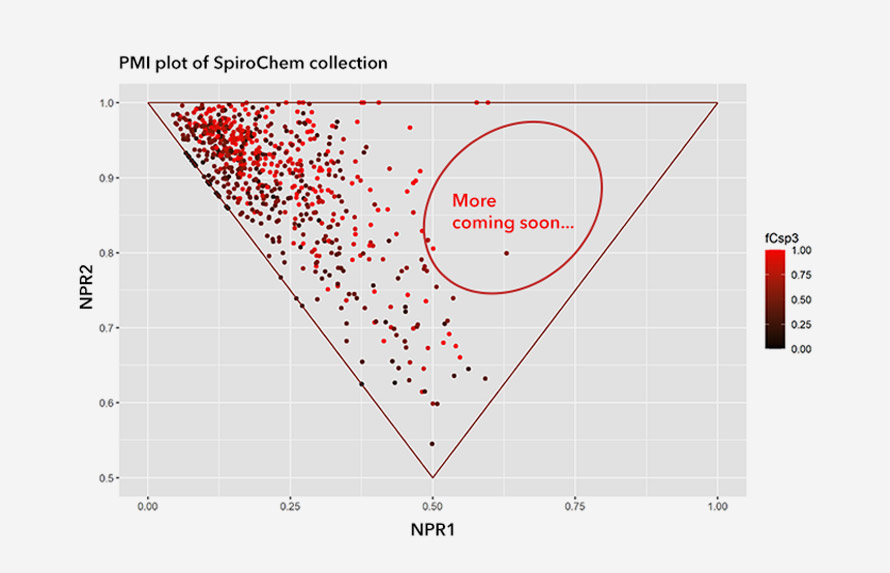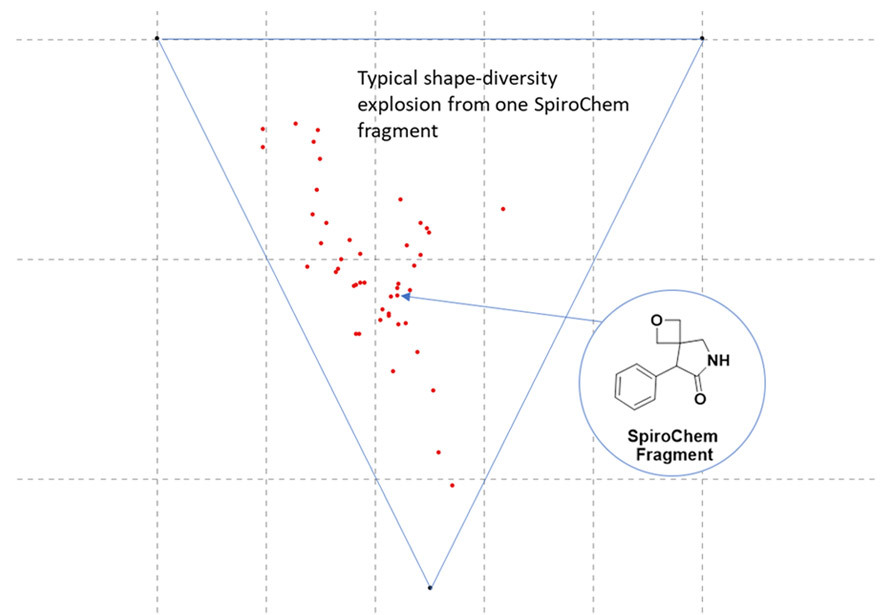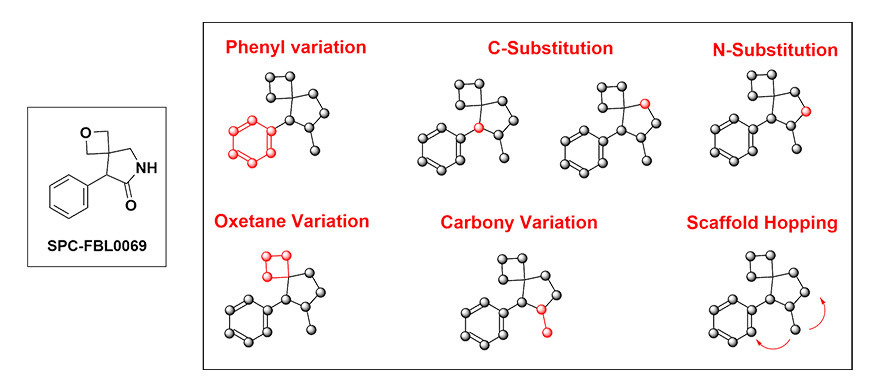


Search by keyword.
Our fragment collection is built upon the exploratory work of SpiroChem on the synthesis of compact conformationally-restricted sp3-rich scaffolds.
The last two decades have witnessed a change of paradigm by life sciences companies, who have redirected their screening efforts for hit finding from high throughput screening (HTS) to more modern and cost-effective techniques such as fragment screening and DNA-encoded libraries technology (DELt).
It is now widely recognized that screening a fragment library that effectively samples the chemical space (typically a few thousand molecules) is an efficient tool to generate high-quality leads quickly.
Physicochemical properties of fragment libraries mainly follow the widely accepted rule-of-three, however sp2-rich compounds with planar, aromatic ring systems often predominate.
Currently, 3D fragments are increasingly being considered complementary to their 2D counterparts and as crucial components to improve pharmacophore coverage and solubility, leading "to better-starting points" for lead generation. It has also been suggested that a highly shape diverse library could display a broader range of biological activities and be useful in generating hits for challenging targets.

At SpiroChem, we use our deep, collective knowledge base and the most advanced technology platforms to continuously prepare novel sp3-rich fragments with high 3D diversity shape.
The principal moments of inertia (PMI) plot of the 700+ in-stock fragments clearly demonstrates that SpiroChem’s sp3-rich fragments target conformations with a wide-ranging spread throughout the plot.

For the hit validation phase, we guarantee follow-up and quick access to close analogs.
For the hit expansion phase, we can introduce diverse exit vectors and functionalities to generate rapidly relevant structure-activity relationship data.
From one SpiroChem fragment, you can get access to expanded analogs with a wide range of 3D shapes.


Let's work together: